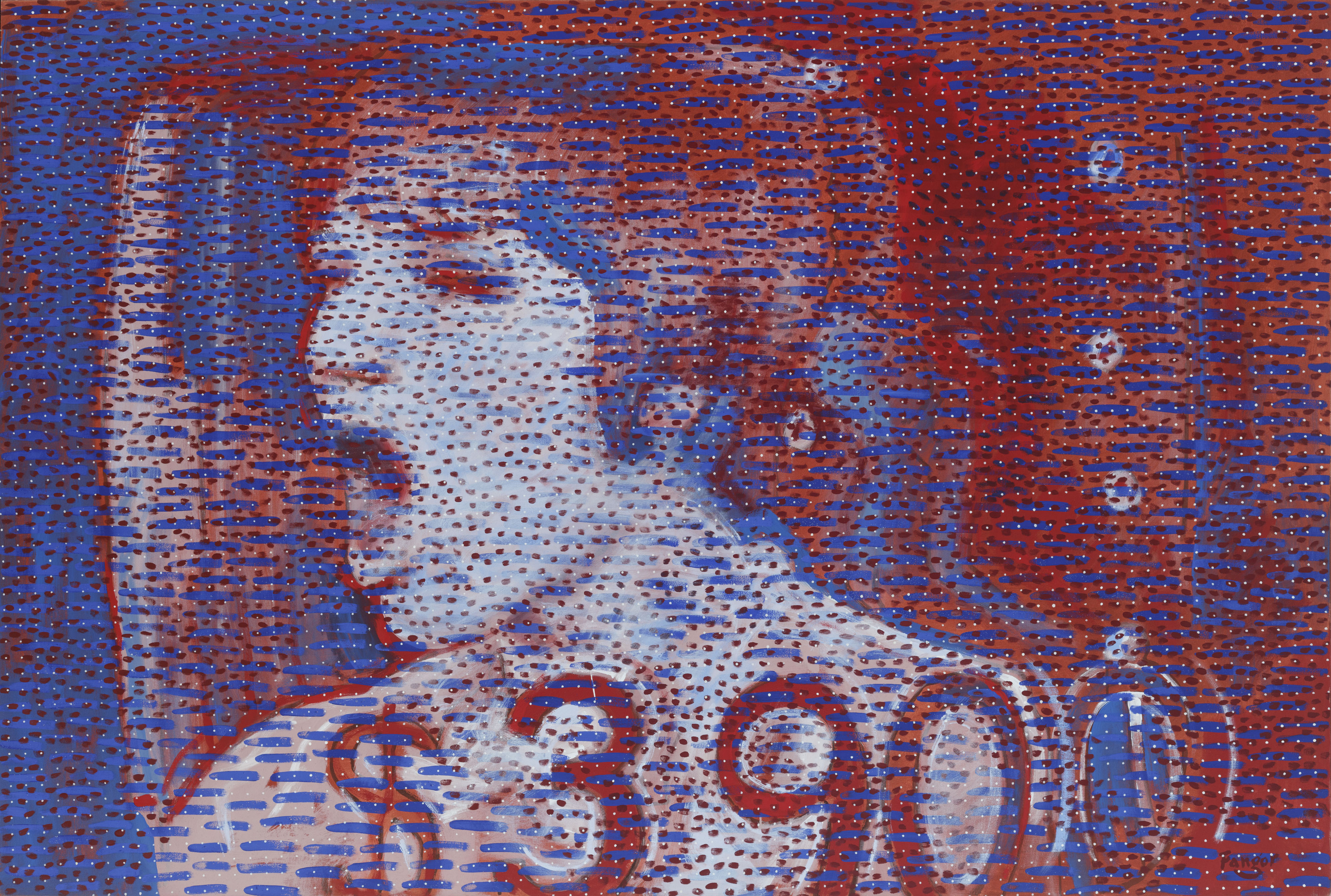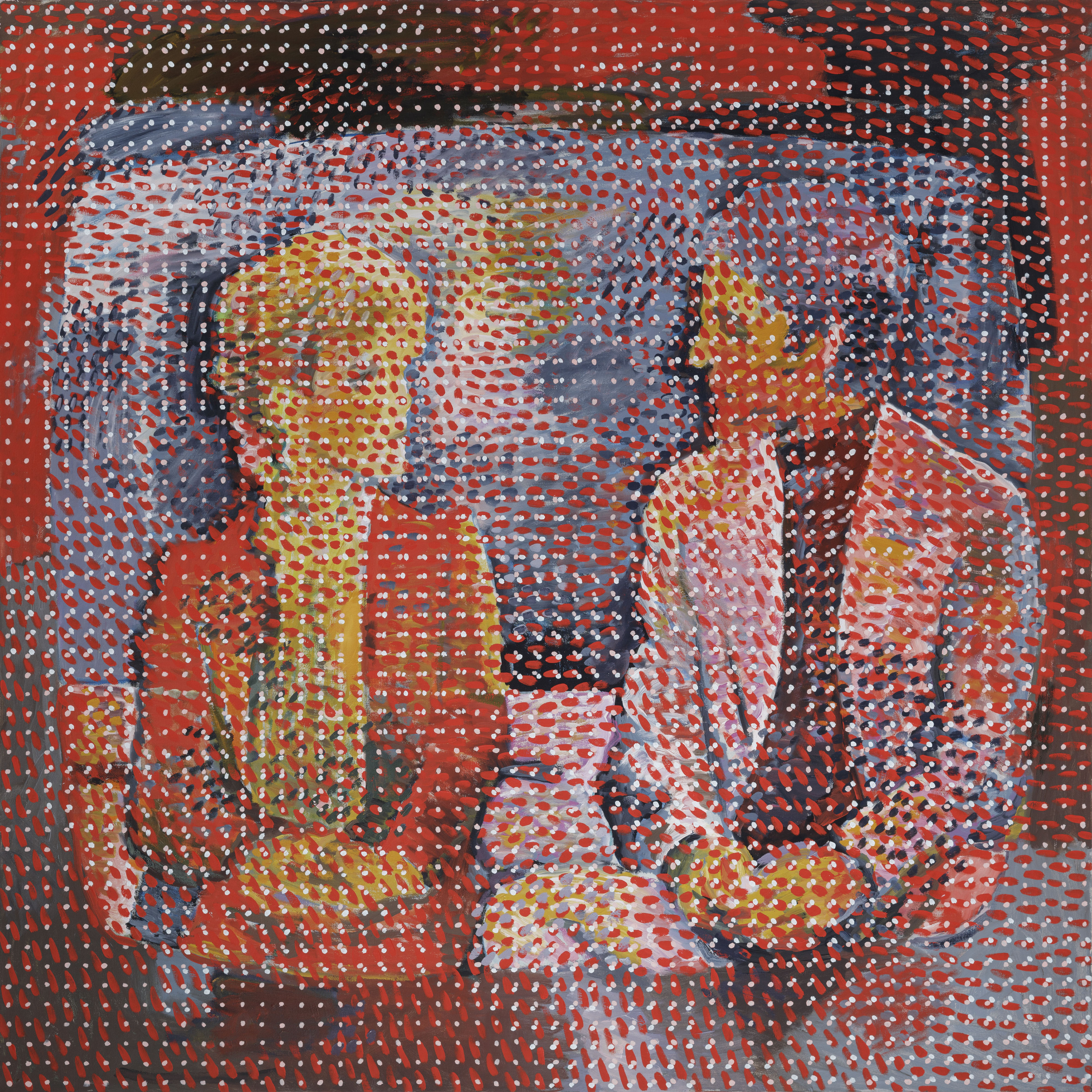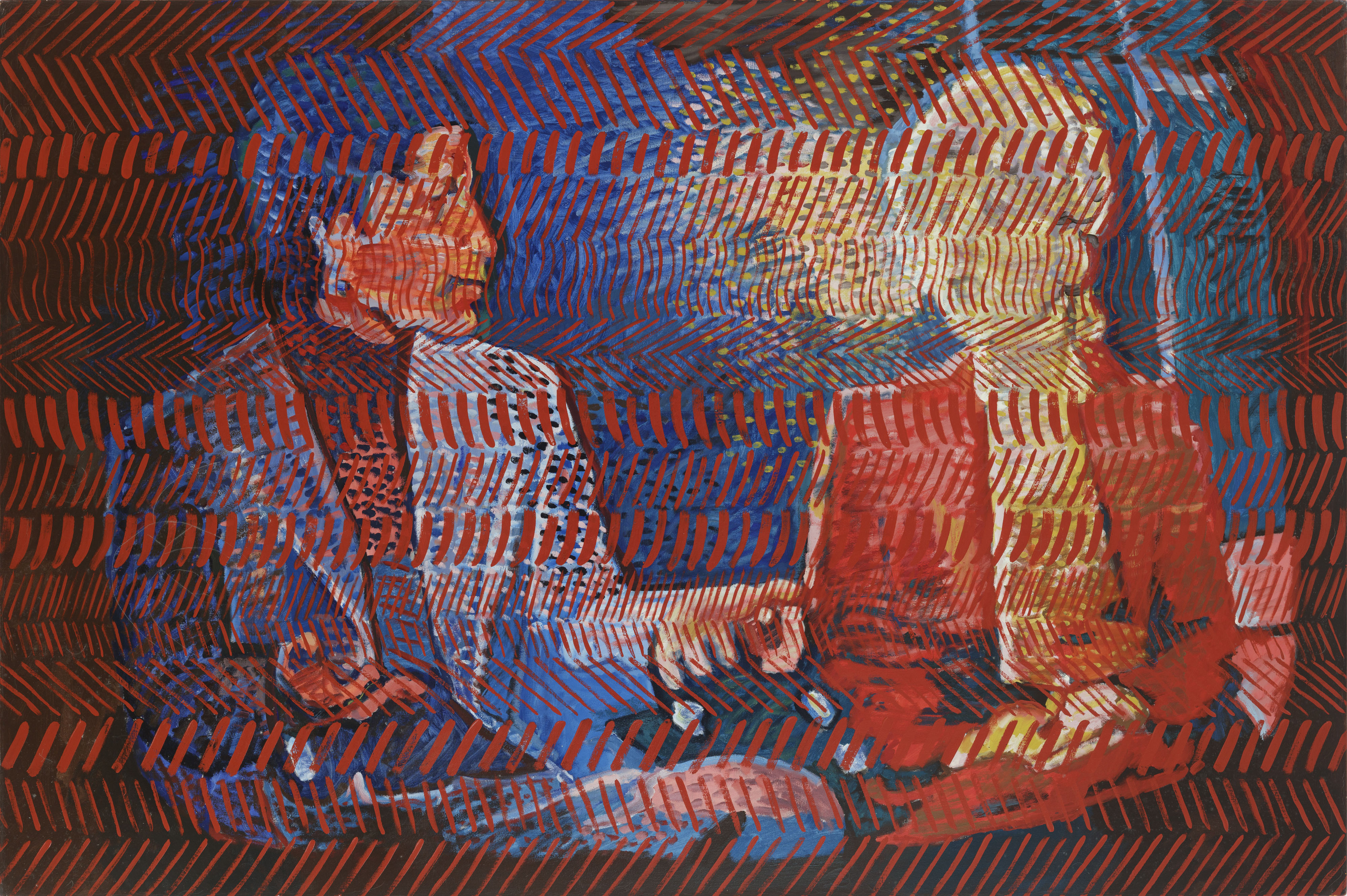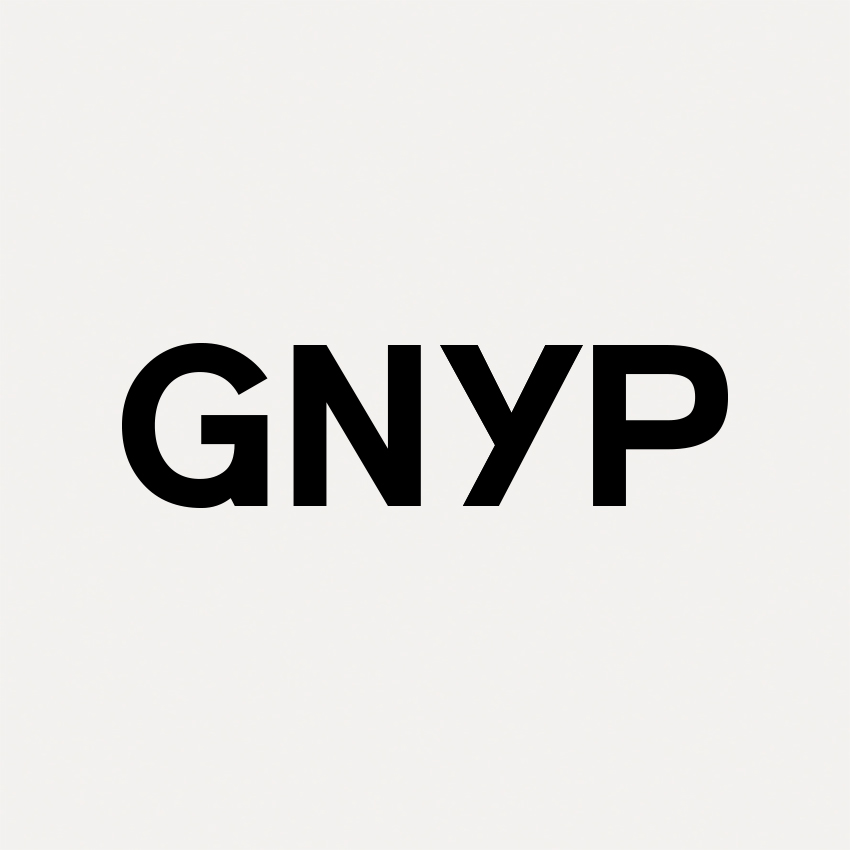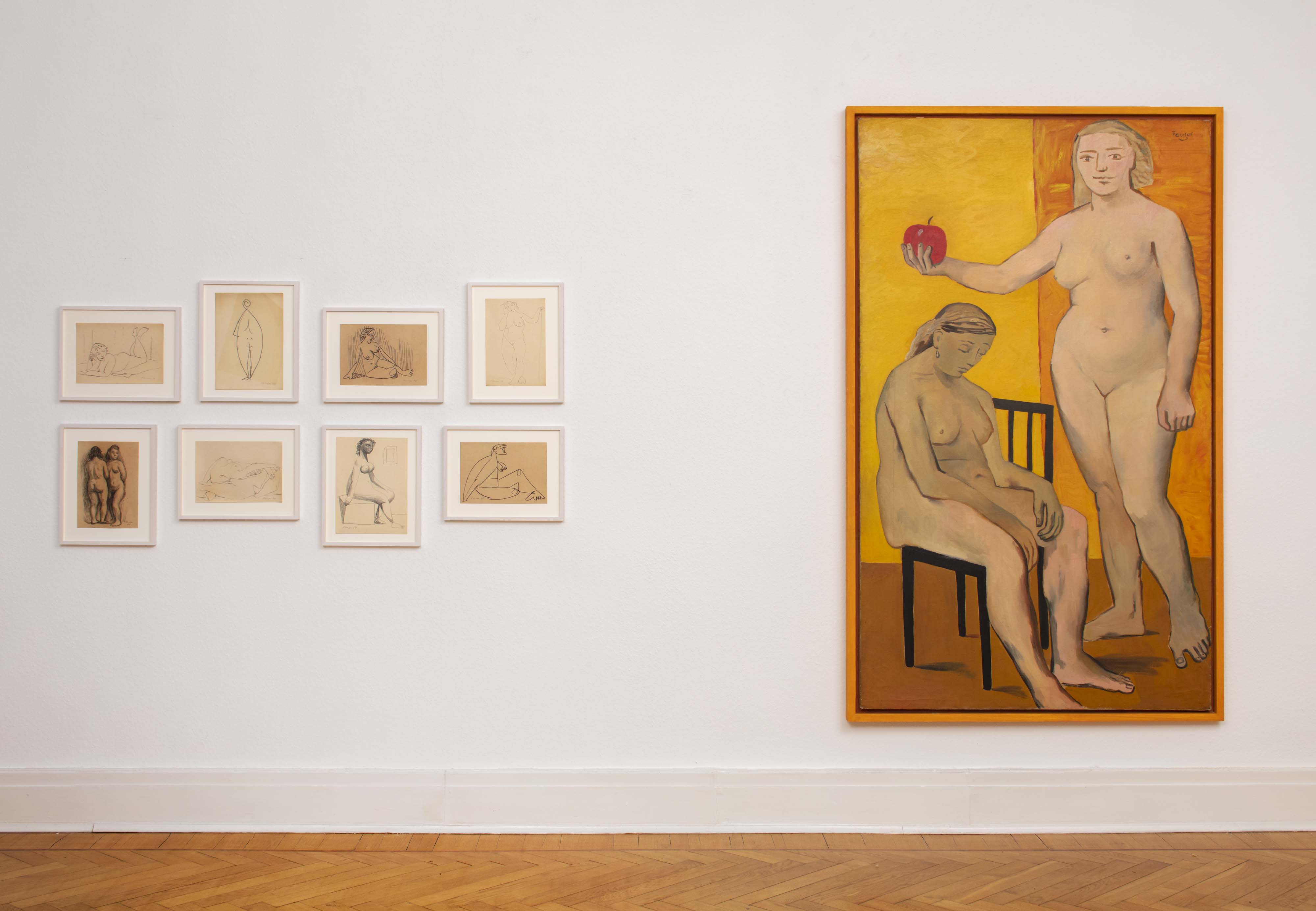Television Paintings 1977–1984
April 28–June 4, 2022
Berlin 10623
Germany
Hours: Thursday–Saturday 12–6pm
T +49 30 31014010
office@gnypgallery.com
Wojciech Fangor (1922–2015) is internationally known for his optical abstractions, though his artistic oeuvre has been very diverse and often substantially changing. After the WW2 the Polish Fangor became a successful social realist artist but the disappointment in the political system and his artistic curiosity made him shift his attention in 1956 into more intellectual investigations of the medium painting and its perception. The collaboration with architects Stanislaw Zamecznik and Oscar Hansen triggered his interest in the ideas of space and spacial relationships even more, which resulted in the groundbreaking installation Study of Space (1957) at Zacheta, Warsaw that is often considered the first environment ever, followed by an exhibition at Stedelijk Museum in Amsterdam the year after.
Fangor’s optical art has got a lot of recognition during artist’s life time; among other things he participated in the important exhibition Responsive Eye at MOMA in 1965 or got a solo exhibition at Guggenheim New York in 1970. Josef Albers saw Fangor as his heir who added space as the 4th element to formal investigations of the basic elements of painting. As a true artist though, Fangor changed his focus and approach again and left abstraction in favor of figuration in the 70s. The exhibition at GNYP Gallery presents the so-called TV paintings made in New York between 1977 and 1984. Formally it has been a continuation of Fangor’s fascination with space in and outside the canvas, conceptually it formed a post-modern investigation about the the power and influence of media like the TV in shaping the reality. Fangor seemed to be concerned by similar questions about the value of the image and the media as the ones posed by the younger Picture Generation’s artists around that time.
A few never before published artist’s notes on the series shine more light on his thinking about the series:
“The television paintings were based on the image of the screen, on the coincidental photographical fragments of transmission on the photographic film. These paintings that digested my personality and my painterly temperament were covered by a grid of electronic distortions… Television stopped being a magic illusionary image that was pouring itself into the inside of my space. What has left is the TV apparat as an object that has the same power of action as every other object that is used to consume the daily life. The TV box hides its own Gulliver theater. Sometimes it shouts about what is happening in the other hemisphere, only to change the subject and try to convince you about the advantages of a toothpaste or a new credit card. It works with the aid of a not materialistic, dissolving and ephemeral play of light.
“After my arrival in the USA I found myself in a world that was more and more based on electronic communication. Television, being a surrogate for immediate human contacts, has become a game between natural electro-optical effects, and the cultural-mythical stream that pours out of it. This is how the TV painting series came to existence. When changing the subject I’m changing the choice of means of expression. Which causes distinction in the specific periods of my work. But, whether my paintings are skinny or fat, tall or small, freckled or squinted, they all have the same father although different mothers. All of them belong to one family and they dive in the same time.”
The exhibition is organized in collaboration with the Fangor Foundation that represents artist’s estate. It will be accompanied by an extensive catalogue on Fangor’s Television Paintings and their historical and artistic international context with texts by Dominic Eichler, Charlotte Jansen and Oliver Shultz to be published in May.
